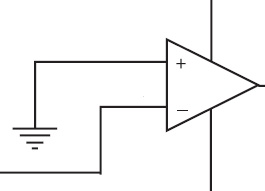ECG Acquisition, Storage, Transmission, and Representation - Chapter 2
G.D. Clifford & M.B. Oefinger
 in
Advanced Methods for ECG Analysis,
(Eds. G. D. Clifford, F. Azuaje and
P. E. McSharry), Artech House,
Boston, 2006.
in
Advanced Methods for ECG Analysis,
(Eds. G. D. Clifford, F. Azuaje and
P. E. McSharry), Artech House,
Boston, 2006.
Chapter 2 provides an overview of the major design considerations when building hardware to acquire ECG data formats, and for the efficient and accurate storage and transmission of ECG data. Discussions are included of every stage of the data route, from the body surface, through sensors and filters, to the final storage media. Furthermore, information on safety, security and international regulatory standards are given, together with experimental protocol design issues, including patient population selection, lead configurations and experimental environments and duration.
Links:
- Matlab code to interface with LabJack hardware for ECG acquisition and ECG analysis
- LibRASCH - Software for reading a variety of data formats, using a variety of languages
- IO - Various libs for data formats and other I/O
- PhysioNet - A massive collection of open source Biomedical Data and Signal Processing tools
- Design of FIR filters
- 6.555 Materials related to Julie Greenberg's Biomedical Signal & Image Processing course
Contents:
2.1 Introduction
2.2 Initial Design Considerations
2.2.1 Selecting a Patient Population
2.2.2 Data Collection Location and Length
2.2.3 Energy and Data Transmission Routes
2.2.4 Electrode Type and Configuration
2.2.5 ECG Related Signals
2.2.6 Issues when Collecting Data from Humans
2.3 Choice of Data Libraries
2.4 Database Analysis—An Example Using WFDB
2.5 ECG Acquisition Hardware
2.5.1 Single-Channel Architecture
2.5.2 Isolation and Protection
2.5.3 Primary Common-Mode Noise Reduction: Active Grounding Circuit
2.5.4 Increasing Input Impedance: CMOS Buffer Stage
2.5.5 Preamplification and Isolation
2.5.6 Highpass Filtering
2.5.7 Secondary Amplification
2.5.8 Lowpass Filtering and Oversampling
2.5.9 Hardware Design Issues; Sampling Frequency Choice
2.5.10 Hardware Testing, Patient Safety, and Standards